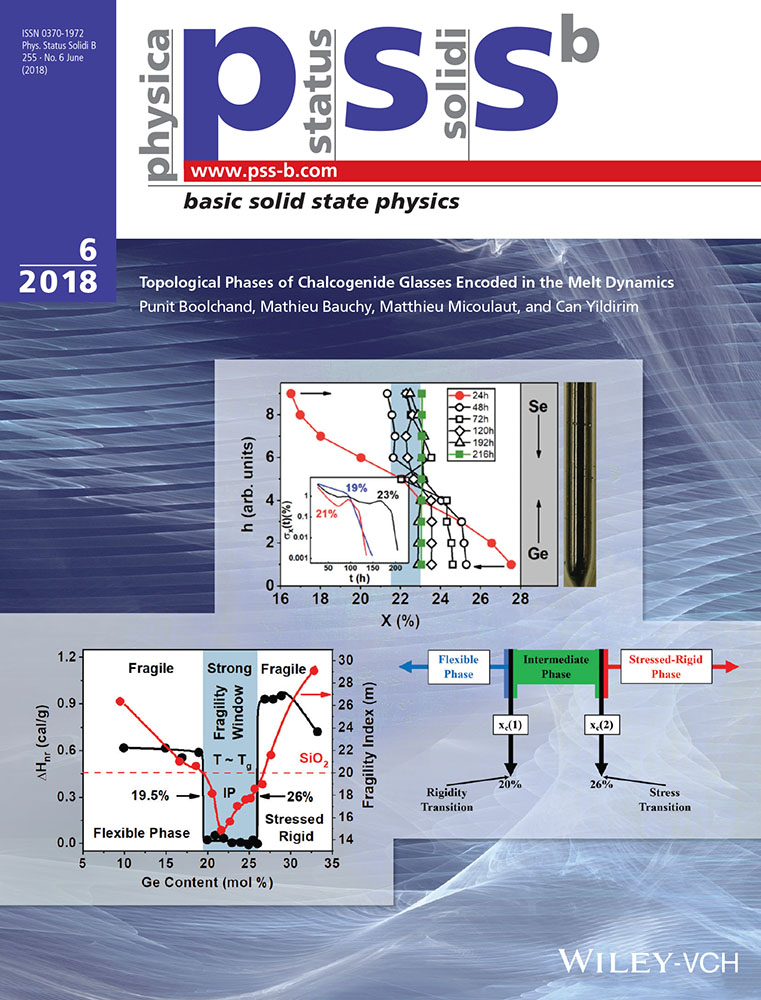Proton Beam Effects on Ge–Se/Ag Thin Films
Abstract
Among the many applications of chalcogenide glasses, their involvement as an active layer in redox-conductive-bridge-memory (CBRAM) devices triggers particular interest because of their potential to replace CMOS-based NAND and flash memory. In these devices the chalcogenide glass film is in contact with a silver film, and it is of a practical interest to understand how a beam of protons can influence this dual layer structure in order to identify how the performance of the CBRAM devices will be affected. In this work we studied the influence of proton beam irradiation over a Ge40Se60/Ag film stack. Various methods of analysis including scanning atomic force microscopy (AFM), Raman spectrometry, Rutherford backscattering spectrometry (RBS), X-ray diffraction (XRD), and X-ray photoelectron spectrometry (XPS) have been applied to study the structure, topography, composition, bonding configurations, diffusion kinetics, and molecular evolution of thin films related to the active sections of CBRAM devices, and quantitative analysis of material parameters and changes is reported. The results reveal silver surface deposition and germanium oxidation, as well as change in the films chemistry as a result of proton irradiation.
Conflict of Interest
The authors declare no conflict of interest.




